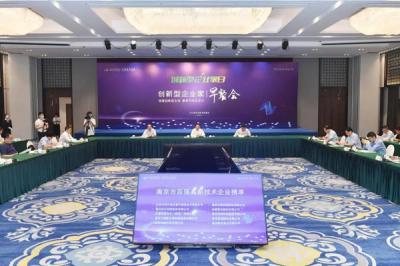Application of Membrane Integration Technology in CBD
Cannabidiol or CBD, English: cannabidiol, is a compound naturally present in cannabis resin flowers. Cannabis has a long history as a drug, dating back thousands of years. Cannabis contains more than 110 different cannabinoids, and cannabidiol is just one of them. However, tetrahydrocannabinol (THC) and cannabidiol may have the most promising application prospects.
Cannabidiol can block the adverse effects of certain polyphenols on the human nervous system, and has a series of physiological activities such as blocking breast cancer metastasis, treating epilepsy, anti-rheumatoid arthritis, anti-insomnia, etc., and is useful for the treatment of multiple sclerosis Has a good effect. Tetrahydrocannabinol (THC) is a well-known excitement compound in cannabis, a psychoactive cannabinoid that can produce mental pleasure after smoking, so it is more targeted at recreational cannabis consumers.
CBD can actually reduce or neutralize the psychoactive effects of THC, depending on the intake of each compound. Many people want the health benefits of marijuana without being exciting. CBD has a strong therapeutic effect without toxic side effects. Moreover, products such as CBD gummies and essential oils on the market are easy to take. Therefore, this makes it a very attractive treatment option for patients with different diseases.
According to a new data analysis by Cowen&Co, nearly 7% of Americans are already using CBD. By 2025, the use of CBD will increase to 10% of American adults, and the number of consumers will reach 25 million. According to data from Brightfield Group, global cannabidiol sales are expected to surge from $591 million in 2018 to nearly $22 billion in 2022, with a compound annual growth rate of 147%.
Most cannabidiol is still produced from traditional extraction techniques, but new technologies being developed deserve close attention. The conventional extraction methods are roughly divided into the following types:
(1)Crush the industrial hemp flowers and leaves and extract them with different concentrations of ethanol; concentrate the extract and then perform water precipitation. After removing impurities, add ethanol to the precipitate to dissolve; then enter the alcohol solution into the chromatography column to obtain the eluent Then add ethanol to supersaturate and dissolve to obtain crystals. The crystals are washed with ethanol or pure water to obtain the initial product, and further uniformly dried to obtain high-purity CBD.
(2)After ethanol extraction, the flower and leaf extract is concentrated to obtain the extract, which is extracted with supercritical carbon dioxide and enters the multi-stage separation axe to obtain the crude product, which is further processed to obtain high-purity CBD.
(3)After ethanol extraction, the flower and leaf extract is extracted with supercritical carbon dioxide, then adsorbed with macropores, and finally purified with a chromatography column.
The above several methods have their own advantages and disadvantages. For the conventional process on the market, Jiuwu explored the membrane integration process, and optimized the process line by combining the advantages of the membrane technology in different process stages. Jiugo uses his experience in the membrane industry to perform membrane separation of the extract at room temperature without phase change, remove impurities in the extract with high efficiency and low energy consumption, improve the feed liquid conditions entering the back-end process, and improve the purification efficiency And extend the service life of the chromatography column, so as to achieve the purpose of reducing operating costs and improving production efficiency.
It is foreseeable that as CBD is more widely used in more products, higher requirements will be placed on the production of CBD. The fierce competition will lead to the upgrading and progress of the production process, and the membrane integration technology, as a new type of advanced technology, will bring more modern and more efficient progress to the production of CBD.




 +86-25-58849045
+86-25-58849045
 +86-25-58749295
+86-25-58749295
 jiuwu@jiuwu.com
jiuwu@jiuwu.com
 No. 9 Park Road, Pukou District, Nanjing City (Sanqiao Factory)
No. 9 Park Road, Pukou District, Nanjing City (Sanqiao Factory) Call us on:
Call us on:  Email Us:
Email Us:  No. 9 Park Road, Pukou District, Nanjing City (Sanqiao Factory)
No. 9 Park Road, Pukou District, Nanjing City (Sanqiao Factory)

 English
English 한국어
한국어 français
français русский
русский Español
Español

